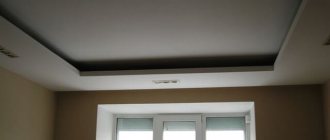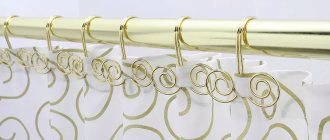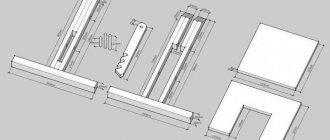Purpose and benefits of home installation
The machine is manufactured for your own economic purposes. Both the complexity of the design and the engine power depend on this. In general, it can perform the same work as professional installations:
- turning of different surfaces (in the form of cylinders, cones);
- thread making;
- pruning work;
- end metalworking.
Thanks to such a wide functionality, this device can be used to sharpen knives, repair some car parts, cut metal structures, etc.
At the same time, making a lathe with your own hands is a more profitable option because:
- such a product will cost less;
- it is not as bulky as many industrial installations;
- it can be designed and performed for specific tasks required by the owner;
- It can be easily placed in a garage, shed and mounted on any hard surface.
Purpose and capabilities
A modern lathe is a symbiosis of mechanical parts and electronic components
The main functions of any modern mechanism, be it a simple manual meat grinder or a coal miner, are provided by rotating parts that would be impossible to produce without lathes. A special feature of these units is the processing of rotating bodies by cutting. Lathes provide precision manufacturing that is unattainable with other metalworking methods. Equipment of this type is easy to automate and allows you to perform the following operations:
- longitudinal turning of a smooth or stepped cylindrical surface;
- processing of ledges and grooves;
- turning of external and internal conical surfaces;
- boring of conical and cylindrical holes;
- cutting threads (internal or external) with a cutter or drill;
- reaming and countersinking of holes;
- groove cutting or cutting;
- shaped turning;
- knurling of a corrugated surface.
The main purpose of lathes is to process three types of parts - shafts, bushings and disks, resulting in a variety of axles, flywheels, liners, sprocket blanks, etc. In addition, other workpieces with the shape of bodies of revolution are processed on universal units, for example , body parts.
Screw-cutting lathes are the most popular design among home craftsmen
All existing lathes are distinguished by:
- according to turning characteristics (turret lathes, rotary lathes, multi-cutting machines, etc. - a total of nine subgroups);
- size range, which depends on the diameter of the workpiece;
- degrees of specialization (special, universal, etc.);
- accuracy class.
The most popular for repetition at home are screw-cutting lathes, which have the simplest design among the units presented above.
Features of a homemade lathe
A homemade metal lathe, as a device assembled with your own hands, has a number of operational features that are important to consider when working on it:
- Since work with workpieces is always accompanied by large vibration vibrations, it is important to ensure the same location of the driving and driven installations - they must be along the same axis.
- The use of commutator electric motors is an undesirable option, since often in these mechanisms the speed of revolutions per minute can arbitrarily increase; This is dangerous because the workpiece may fly out.
- If it is impossible to install another electric motor, then in the case of installing a commutator motor, it is necessary to equip it with a reduction gearbox - this will compensate for the uneven running of the mechanism.
- The optimally suitable electric motor is an asynchronous one, whose speed does not deviate significantly.
- The driven center may consist of a static or moving structure; in any case, it is made from an ordinary bolt, which is processed so that the barrel takes the shape of a cone - it is with its help that it can rotate.
Assembly instructions
To build a homemade metal lathe, it is best to start with the bed. On the upper edge of the base, seats are prepared for the longitudinal guides of the caliper, spindle, motor and other necessary elements. The leading requirement for these surfaces is to provide a reference plane for all equipment. The best approach would be to mill the sites using industrial equipment. It is advisable to immediately drill mounting holes on it. Otherwise, it will take much more time to install and align the guides.
The longitudinal guides of the support are attached directly to the base of the machine using screws. The lead screw bearing blocks are also installed there. During installation, ensure alignment of all elements. After the guides are finally secured, bearing modules are put on them. From above, on the mounting surface, the base of the transverse axis is attached. The latter uses a metal plate with mounting holes. The same plate is installed on the transverse movement bearings and serves to secure the tool holder. The homemade lathe will be completed by attaching miniature indicator dials and hand drive flywheels to the ends of the drive screws.
Preparatory stage: design and drawings
At the preparatory stage, it is important to understand what components the future metal lathe will consist of. Based on this, suitable units and parts are selected from available materials. It is important to consider what specific tasks the mechanism will be focused on and what it will be used for.
In principle, the installation should consist of the following elements:
- Electric motor with transmission to the drive mechanism. Working units from old washing machines are often chosen. Usually the power is selected in the range of 1000-1500 W. This is enough for household work.
- Connecting parts (metal corners, bolts).
- Housing and metal base (pipe, channel).
- Running gear – handle for longitudinal movement, bearings.
- Supporting part (frame structure).
- Thrust mechanism with cutters.
- The tailstock and the front headstock – ideally, can be taken from another machine.
The diagram of the finished device is shown in the photo.
When all the parts are available, you can draw up a schematic drawing of the product. You can take the following drawings as a basis.
The assembled lathe, its main elements can be seen here.
NOTE. It is best to make a metal lathe with your own hands from metal products (pipes, angles, etc.). Any wooden structure is short-lived, and working with the part will be much more difficult.
Tabletop lathe, main components
A do-it-yourself mini metal lathe is made on the basis of what was done in production conditions, but for one reason or another it no longer serves its intended purpose. This means that the main components and assemblies will have to be taken from other devices that are completely unsuitable for this, adapt them and use all your ingenuity.
So, the main parts of a turning-screw-cutting or turning-milling machine should be:
- frame, a durable metal structure that ensures the stability and strength of the entire structure;
- guides for a lathe are a real headache for a DIYer, because they must have accuracy and stability, guides both longitudinal and transverse;
- lathe drive;
- working body - cutting part, system for fastening and adjusting the feed of cutters;
- spindle and tailstock - for fastening and holding the part during processing;
- Safety features - protection against spontaneous activation, protection against chips.
Actually, these are only the main parts that have to be made or selected from what is at hand.
Making a bed: step-by-step instructions and video
Further actions consist of manufacturing the support unit (frame), installing the working equipment, connecting it to the electric motor and direct commissioning. The sequence of actions is as follows:
- First you need to make a frame, which can be cut from steel pipes (profiles) in accordance with the dimensions in the drawings. All joints must be made only at right angles, so you can check the correctness of the connection using a regular square. The bed is made of guides. which can be used as long shafts.
- The side posts of the frame should be given special attention, since they are load-bearing elements. Consequently, the immobility of the entire structure largely depends on them. It is best to make the stands on a professional lathe.
- Next, you need to assemble the entire support installation: the side elements go along the edges, between them there are 2 guides. Bushings are mounted on the guides at a certain interval, as shown in the photo.
- Next, the bushings are fixed, with the help of which the tailstock and tool holder will be attached. In this case, it is better to make sure that the bushings are of different sizes, since the movement of the mechanism in this case will be greater.
- The surfaces for mounting the caliper are made of ordinary steel sheets. It is important that they are free from defects and even. The optimal sheet thickness is within a centimeter.
- Next, the lead screw is installed. You can make a carving on a metal stick, but there are simpler options - for example, use the leg from an old swivel chair
- When installing the screw, it is important to ensure that the side posts are equipped with bushings. A steering wheel is attached to the propeller itself to allow rotation, as well as a vernier.
- After this, the surface is mounted on which the headstock will then be installed.
NOTE. The holes on these sheets are also made on a professional machine. They need to be made with particular precision, since even small errors will not allow the device to function normally - the working parts will periodically get stuck.
After this, the frame is completely assembled. It is important to take into account that all elements are tightly connected - the slightest slack is unacceptable, since during operation vibration swings will increase the fragility of the mechanism and can lead to damage.
Visual instructions for installing the frame are in this video.
Machining on lathes, diagrams and drawings
Briefly about the control system, we can say that if knowledge and skills in engineering radio modeling allow, you can always make a simple screw-cutting lathe or lathe-milling machine with numerical control. CNC lathes allow you to automate the same type of work and they are needed if the master has to make a large number of identical workpieces according to a template.
For the most part, desktop machines are designed to perform one-time work, so the use of complex programming systems is hardly justified on machines with a low degree of accuracy.
Assembling the mechanism with your own hands: step-by-step instructions and video
Further work is aimed at installing the mechanism itself and fixing it on the working surface. The algorithm is as follows:
- If it is not possible to take a headstock from an old machine, you can also make it yourself. To do this, take the shaft and install it on the support using bolts.
- Similarly with the tailstock: if it is not ready-made, it can be made using a screw, profile and bushing. A handle from any mechanism is also selected and mounted into a single mechanism.
- The next stage is to assemble the caliper, similar to the technology for assembling the frame.
- The tool holder, which is manufactured next in line, is based on a regular plate, which should preferably be at least 10 mm thick. Fastening to the caliper using bolts.
- The subframe can be welded from profile pipes. Its dimensions must exactly match the finished product, since otherwise it will be quite difficult to change the position of the belt.
- The final stage is to install an electric motor with a belt drive.
Video: DIY mini lathe. Headstock
It is important to first do the first start at idle speed, and then check the operation of the entire device on a rough metal part.
Design Features
The task of making a lathe is not as difficult as it seems at first glance. Important design elements are simply copied from industrial designs. At the same time, the scheme of a homemade lathe does not require the implementation of all assembly units present in factory models. You will need to make a frame, a support and a spindle. Other nodes will be needed only to solve specific problems.
Bed design
The basis of the working part of most machines is the bed. The massive base is intended for the installation of all mechanisms, and also serves as a damper for vibrations that inevitably arise during machining. Many characteristics of the finished product will depend on the correct choice of frame. Classic cast iron designs are not used in homemade machine tool construction due to the high complexity of the technology. Practical applications have been found for frames of monolithic or welded type. The monolithic version provides high rigidity and vibration damping characteristics. Its main drawback is its heavy weight. A metal plate 10-20 mm thick is perfect for such a base. Depending on the purpose of the machine, it is possible to use other materials. Monolithic bases can also be obtained using other technologies, for example, polymer concrete casting.
Bed for a homemade lathe
The welded frame is made in the form of a rectangular frame. For its manufacture, various metal profiles are most often used. The welded frame of the lathe is easy to manufacture and lightweight. But the apparent simplicity of this solution turns into the need for additional processing of the seats for installation of equipment. A compromise can be achieved by choosing a regular channel. The necessary elements are installed on the horizontal edge of the channel; the side ones are used as a stand and a place for attaching auxiliary devices.
Machine support
To make a homemade lathe support with your own hands, you will need guides along which longitudinal and transverse movements will be performed. Industrial equipment traditionally uses dovetail slide guides. It is impossible to make such a unit in a high-quality manner at home. Therefore, when choosing, preference is given to ready-made cylindrical or profile rails with linear bearings. The best option for constructing a movement system is to install rails with rolling bearings. They allow you to obtain high accuracy, no backlash, reliability and long service life. It’s no wonder that such rails have become very popular among machine tool manufacturers all over the world. Their main disadvantage is considered to be only their high cost.
There is also a cheap solution. It involves the use of polished rollers from old printers or other equipment.
Caliper
Movement in the longitudinal and transverse directions is created using running pairs of the screw-nut type. In mechanical engineering, mechanisms are used that are based on threaded rods, trapezoidal screws or ball screws (ball screws). The choice of standard pins is justified only for very simple machines, as it does not provide adequate accuracy and durability. The trapezoidal screw is more reliable and resistant to heavy loads. The best, but expensive, option involves the use of a ball screw. They are installed in precision industrial equipment. Fastening the lead screws requires the use of bearing blocks that ensure free rotational movement and the impossibility of reciprocating movement. You can make such a block yourself, but it is better to use mass-produced models.
To connect the caliper components together, steel plates 8-10 mm thick are suitable. It is enough to process them according to the dimensions of the guides and drill the required holes.
Assembling the caliper will be reminiscent of working with a children's construction set, and the result will be no worse than that of factory models.
Spindle and feed box
The spindle head is used to fasten the spindle axis, install the gearbox and feed switch box (Gearbox). The working part of the device of any box requires a large number of gears and is difficult to implement at home. A simple solution to the spindle problem would be to use a variable speed drive based on an asynchronous motor with a frequency inverter. This kit completely replaces the classic gearbox.
Spindle
A homemade gearbox for a miniature lathe is unlikely to be needed. The small size of the parts being processed will not require much physical effort from the turner, and it is much more productive to cut small threads with a tool. If you still need a homemade turning machine with a feed box, then you don’t have to look for a set of gears. Automatic feeding can be performed using low-power electric motors, which will even allow the use of a CNC device in the future.
Lathe from a drill: assembly algorithm
To use the device in a city apartment, it is quite possible to create a homemade metal lathe from an ordinary drill in a few hours. It will serve both as an engine and a rotating mechanism. The design is not so powerful, but it is quite suitable for performing small tasks.
It is advisable to attach the drill to a metal structure - an old stand is ideal.
The manufacturing algorithm is as follows:
- First, as always, the frame is made. Moreover, if you have a reliable workbench with a smooth surface, then it can serve as a support, and then the bed will not be needed.
- Then the wooden bases of the structure are created or a ready-made metal stand is selected. It is important to securely fasten the drill head to the base. This can be done using a regular clamp.
- The emphasis on the other side can be made using bars of the appropriate size. They are fixed to the surface with self-tapping screws. All other assembly stages do not differ fundamentally from conventional devices.
Video: do-it-yourself lathe from a drill
The installation can also handle wooden products - with its help you can apply simple relief carvings to a wooden workpiece, as shown in the video.
HELPFUL ADVICE. Working on a drill lathe is not limited to just cutting parts and sharpening. You can install a copier on it, with which you can create perfectly similar parts at home in a matter of minutes.
Mini-machine: manufacturing video
Often, for household purposes, you need a small homemade metal lathe - here is a video with clear step-by-step instructions for making it.
Application areas of lathe
A lathe is an ancient device; it is an early device for processing a wide variety of parts from a wide variety of materials - from metal to wood, etc.
Processing is, first of all, turning surfaces both inside and outside, drilling and boring holes of different diameters, cutting threads, and forming surface relief using knurling.
If we talk about turning metal parts, then industrial turning devices produced by different factories are expensive and massive units, which are very difficult to operate.
They in no way relate to desktop devices; these are serious industrial units that, in principle, are not suitable for handicraft work. Therefore, a DIY lathe is a great idea by all accounts.
Drawing of a lathe.
You can, for example, make it in the form of a mini version, which will be quite enough for processing both metal parts and workpieces made of any other materials.
There are certain limitations when using homemade mini-machines: they are designed mainly for working with round parts, with sections such as axles, handles for tools, wheels, etc.
In mini-machines, parts need to be fixed only in a horizontal position for their rotational movements. Excess material during turning is removed by cutters, which are fixed in the support of the lathe.
Safety precautions
Compliance with certain rules when working on a machine is mandatory, especially if we are talking about a product made by hand.
Preparatory stage
Immediately after assembly, you should run the machine at idle speed for a few minutes and listen to the sounds of the engine: they should be uniform, without extraneous noise. Preparation for work consists of the following steps:
- Appropriate clothing is worn, all buttons are fastened and protruding parts are removed.
- Before starting work, the workplace should be in complete order so that only the necessary tools are on it - then you can consistently implement the entire plan without unnecessary fuss and waste of energy.
- Before each session, the homemade machine must be checked for the integrity of all parts and the reliability of their connections.
- It is also important to take care of sufficient lighting of the working surface and the correct location of the source so that your own shadow does not interfere with your work.
Safe work rules
During work, you must adhere to the following rules:
- Removal of parts, as well as cleaning and lubrication of the working mechanism is not carried out during operation.
- When processing a part, you need to be on the correct side and at a safe distance from the installation itself.
- Do not pass any objects or place your hands over the operating mechanism.
- If you are working on cutting a part, then the part being cut cannot be supported by hand - it is unknown in which direction it will move at any given time.
- It is unacceptable to lean even on stationary parts of the machine or lean on the working surface.
- All chips from parts are carefully removed after each working session.
A visual illustration is presented in the diagram.
A visual technology for working on a lathe for hand-made metal is presented in the video.
Parameters, advantages and disadvantages
Mini lathes for metal processing differ radically from woodworking machines. The fact is that the entire structure of the frame and guides must withstand quite large loads, which are implied by metal cutting. At the same time, it must ensure feed accuracy and processing speed, which is very important when processing metals of different hardness.
The main parameters of a lathe that you will make yourself are linear dimensions, power and processing accuracy. We are not talking about a specific device now, since everyone sets their own tasks, and in the drawings and diagrams presented on the page you can find a suitable option for yourself. We are talking about the idea of creating a tool in principle and its main parameters.
So, depending on the distance from the guides the center of the spindle and tailstock will be, the diameter of the workpiece will be determined. The length of the workpiece actually depends on the degree of freedom of movement of the tailstock along the guides. The same applies to the feeding device, which must correspond to the dimensions of the maximum diameter of the workpiece.
But you need to be prepared for the fact that a homemade lathe will not be able to provide high processing accuracy and high speed. This will be a device for making parts with a low accuracy class. Let’s figure it out further on what this depends on.
Features of lathe care
Caring for the mechanism is an essential condition for its long-term, trouble-free operation. Several rules must be followed:
- All waste that falls on the working surface of the device during operation must be removed in a timely manner.
- To ensure even distribution of oil along the guides, you need to move the carriage 7-8 times back and forth.
- All connections need to be tightened periodically, since constant vibration during operation gradually weakens them.
- It is important to ensure that the belt tension is always uniform - either too tight or too loose a tension is unacceptable.
- All moving parts are periodically lubricated with ordinary machine oil. In this case, the bearings are lubricated especially carefully - they experience special friction during operation.
NOTE. Lubricant should not get on the drive belts, since in this case friction is greatly reduced, the belt slides along the surface of the pulley, as a result of which the tension weakens.
Lathe repair cost
| Type of work | Price |
| Spindle Prevention | 9,000 rub. |
| Troubleshooting clamping devices | 19,000 rub. |
| Burnout (damage) of the stator winding | 30,000 rub. |
| Replacing bearings with rotor balancing | 50,000 rub. |
| Replacing spindle sensors | 10,000 rub. |
| Maintenance | 10,000 rub. |
| Non-standard work | 10,000 rub. |
| Major renovation | 50,000 rub. |
| Modernization of machine tools | 30,000 rub. |
Our main specialization is machine repair
If your machine does not work, our specialist will arrive as soon as possible and fix it. Call and consult by phone: 8
Technologies
Thanks to the use of modern devices, we can more accurately identify faults. And we save your money on repairs
If your machine does not break down as usual. We will send it to our technicians and they will solve any problem
Speed.
You need the machine to work as quickly as possible. Our desires coincide.
Read useful information:
Turret machine repair
In case of significant breakdowns of the turret machine, a lot of difficulties can arise. In the article you can learn about the types of such equipment, as well as how to carry out repairs yourself and how much the help of specialists will cost.
Professional metal lathes
If you need a professional tool for large volumes of complex work, you should understand what types of metal lathes exist.
Machine diagram
The schematic diagram of the device is shown in the figure.
Types of machines
Depending on their purpose and features of the device, there are several types of metal lathes:
- Universal ones are designed to perform basic metal work:
- drilling;
- milling;
- turning.
This is the most popular type of device - with their help you can process parts outside and inside, work with flat, conical and cylindrical surfaces. You can carry out complex work on cutting precise threads, processing the ends of parts and drilling holes of almost any diameter.
- Pipe cutting devices are designed for various types of processing of pipes and their connections. They are mainly used in the mining industry and geological exploration.
- Computer numerical control (CNC) lathes are a separate class of modern machine tools that are used in almost all large industrial facilities. Using electronic settings, you can achieve high cutting accuracy and manufacture parts of any degree of complexity. Moreover, all processes are fully automated, which eliminates the human factor.
Depending on the location of the bed, there are the following types of machines:
- Sloping (at angles from 30 to 60 degrees). In this case, all the chips are poured down a chute into a special waste container, making the production process fully automated.
- With a horizontal frame - these devices are equipped with a mandatory casing that prevents waste from scattering during operation.
Types of work on a lathe
Depending on the characteristics of the workpiece feed, as well as on the specific type of metalworking, the following types of work on a lathe are distinguished:
- Turning with manual or automatic feed.
- Cone turning.
- Thread cutting.
- Drilling holes.
Turning with manual or automatic feed
In this case, it is important to set the top of the cutting part so that it is slightly below the axis with the workpiece. If this cannot be done, then it is better to install another tool or grind the part.
Often, when carrying out such work, the tailstock is not needed - then it can simply be removed
NOTE. If it is not possible to ensure reliable fixation of the workpiece in the chuck, you can use a steady rest.
Many models provide the ability to automatically feed the workpiece. In this case, the cutting part should be located to the right of the workpiece.
While working, it is better to always keep your left hand free so that you can immediately press the emergency shutdown if the workpiece strays from the desired direction.
Taper turning
The sequence of actions is as follows:
- The part is secured with a spindle and tailstock.
- If possible. then the speed of the mechanism is adjusted on the machine. It is selected depending on the softness of the material, which can be determined in advance from the reference book. If this is not possible, it can be established experimentally.
- Next comes roughing, followed by finishing.
- If it is necessary to make a so-called Morse cone, it is necessary to shift the centers so that the cone is located at the desired angle, as shown in the figure.
Features of the technology for turning a cone on a universal machine are shown in the video.
Threading
On lathes you can make internal or external threads on a workpiece. Threads are applied to both cylindrical and conical products. There are three types of profiles:
- at right angles;
- at an acute angle;
- trapezoidal.
Technologically, the process is performed using a sharp tip of the cutter. The cutter is attached to the support and moves with it, leaving marks on the metal product at a certain interval.
Cutters can be either solid or prefabricated with fasteners. Cutters with soldered plates are also manufactured - they are especially durable, since the plates are made of durable alloys (brass).
Drilling holes
For proper drilling, it is important to prepare the end of the workpiece especially well. It is trimmed to ensure that the surface is as smooth as possible. You also need to make a slight recess at the end so that the work can be done exactly in the intended place. The recess can be made using a drill or cutter.
The size of the holes is adjusted by installing the appropriate drill. If the hole is made smaller, you can drill it out - that is, obtain a larger hole using a wider drill.
Types of failures of lathes
In most cases, the structure of lathes is the same:
- bed;
- spindles;
- working grandmother.
In this case, scraping of workpieces is usually carried out in a horizontal plane. If we analyze screw-cutting lathes, they differ from simple ones in that they have front and rear working headstocks, a support, a bed with an extension and a feed box. The following malfunctions occur in the equipment:
- Based on practice, the spindle speed control module breaks first. Tapered roller bearings, which are used in many machines, are subject to the greatest degree of wear. From time to time, adjustment and replacement of bearings is necessary, which directly depends on the lubrication system and type of machine.
- The next most common breakdown is a malfunction of the caliper locking holder. In this case, the part being processed moves unevenly, both in the transverse and longitudinal directions.
All lathes vary in size, design and type of workpieces. There are semi-automatic and automatic devices. The latter, as a rule, work much longer, since when feeding manually, the size of the head and the degree of its turning are often not calculated correctly.
What can be done with a mini-lathe, and where is it used?
Household mini-lathes, like similar industrial equipment, are designed for processing metal workpieces and giving them cylindrical, conical and spherical shapes. Nowadays, almost all industries use CNC units, which makes it possible to reduce human participation to almost zero, but for home needs a simple machine is suitable. Despite the fact that compact turning equipment has inherited most of the functions from its larger counterparts, however, it can only be used to process small workpieces and parts. Also, on mini-machines you can perform end cutting and drilling, perform external and internal threading, boring and much more. Compact turning equipment is perfect for a garage, home, installation on a balcony or in a small workshop.
Tabletop metal lathe
What does a lathe consist of: main components
For the most part, industrial and household lathes are similar. The difference lies in functionality, power and weight. The figure below shows the structure of a typical screw-cutting lathe. The main nodes are:
- bed;
- caliper;
- headstock (placement of the gearbox to adjust the rotation speed and change the amount of torque);
- tailstock (for more stable and reliable support of the workpiece or part clamped in the chuck (spindle), as well as for installing drills, taps and other tools);
- tool holder
bed
One of the main elements is the frame - a massive metal base on which all the main components and parts of the equipment are mounted. It must be strong enough, and the mass must be such as to prevent the machine from tipping over during operation. For the floor version, massive supports (pedestals) are added.
Lathe bed
Lathe support
The lathe support is designed to move along, across and at an angle to the spindle axis of the cutters fixed in the tool holder. The device has a cross design, consisting of three main elements: a carriage, a transverse and a cutting slide.
Read also: DIY wood drying chamber
Making your own lathe headstock
The headstock is one of the most difficult components of a lathe, especially for DIY production. It houses a gearbox with a spindle and a control unit. Under the headstock casing there is an electric motor, which is connected by a belt drive to the gear pulley.
Homemade headstock assembly with chuck
This unit contains a block consisting of replaceable gears designed to transmit and change the spindle rotation speed and torque from the feedbox shaft. You can buy a lathe headstock or make one yourself.
Lathe tailstock
The tailstock of a metal lathe is movable and is designed to press the workpiece to the center of the spindle. One of the elements of this unit is a quill, on which a stationary or rotating center is installed, the tip of which rests on the workpiece. The workpiece is installed in a chuck on the spindle and supported by the tailstock. This ensures reliable fastening of the part for high-quality processing.
Metal lathe tailstock
Drills, taps, countersinks, etc. can be installed in the tailstock. When installing and moving on the skids of the frame, it is necessary to avoid sharp and strong impacts on the body of the unit in order to prevent displacement of the centers.
Tailstock detailing
Making your own tool holder for a lathe
The tool holder is designed to attach a metal processing tool to the support of a lathe and moves both in the longitudinal and parallel directions relative to the workpiece. There are two types of tool holders: two- and four-position. In the first case, you can simultaneously install two cutters using screws, and in the second - four, which allows you to quickly change cutters if necessary without stopping the lathe. A special handle is provided for quickly changing cutters.
Tool holder for metal lathe










